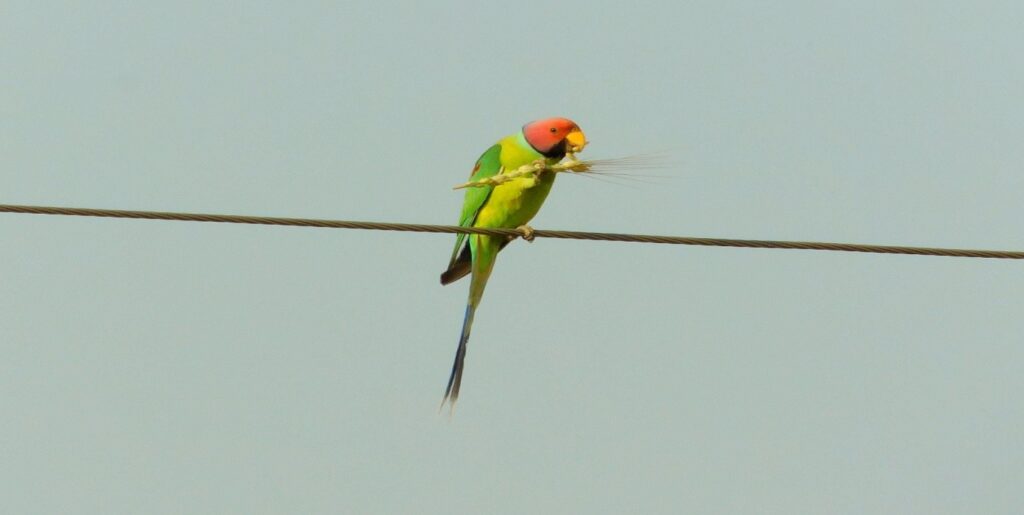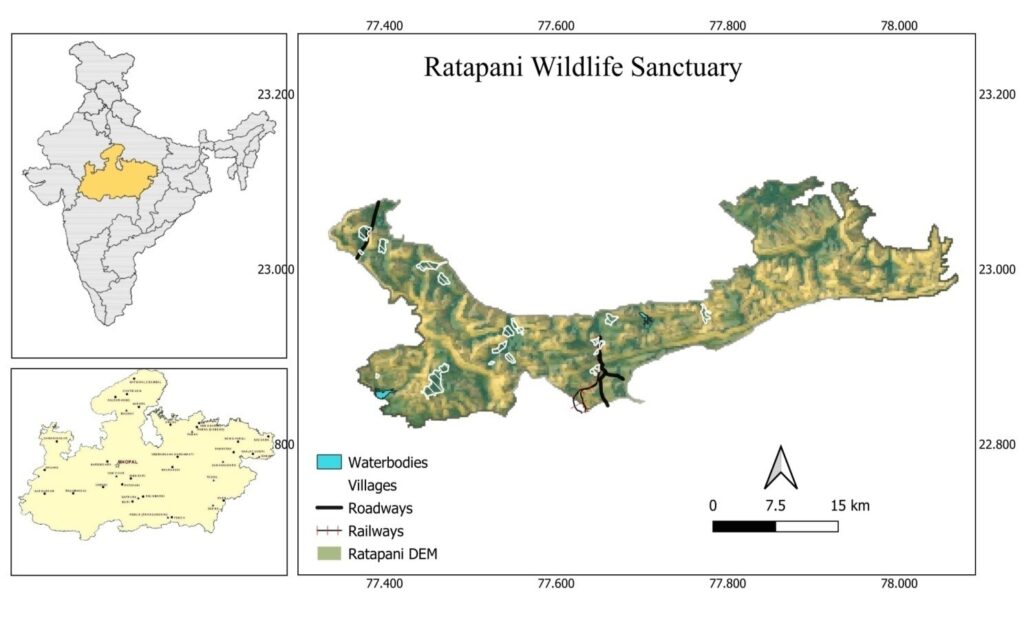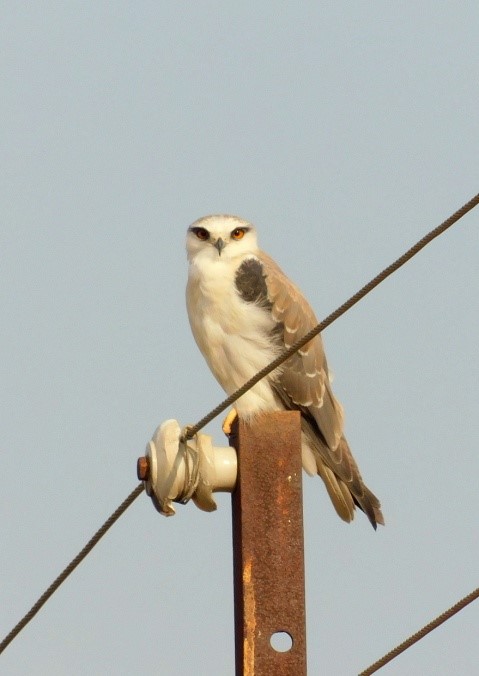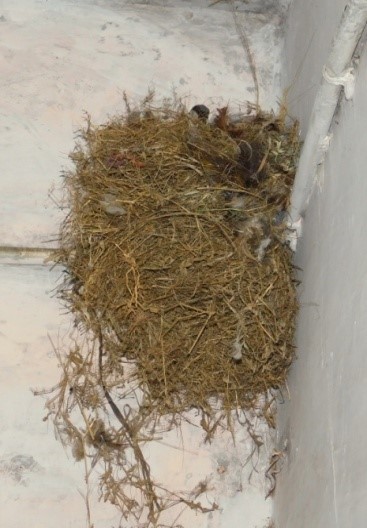Many of the pristine forests and natural ecosystems of the world are today at grim danger of degradation due to the immense amount of anthropogenic pressure on them, India has an ever expanding population many of which still lives in villages in or around natural areas, forest areas, and even in the protected areas, this puts up high degree of biotic pressure on most of the Indian forests. Human encroachment in the forest areas in the form of agriculture, settlements, roads and railway tracks changes the natural ecosystem of the forest by changing landscapes, which results in fragmentation and habitat loss which in turn affects the biodiversity and the ecosystem processes in urban as well as rural areas.
How do changing landscapes impact the bird community?

The avian composition in any forest is highly significantly related to tree density, canopy cover, tree average height, tree height diversity. Other vegetation structures like grass cover and undergrowth also significantly affect the bird composition in an area Bird. Thus the anthropogenic disturbance which results in a difference in the natural vegetation structure significantly affects the bird composition by creating new microhabitats and new niches thus supporting new assemblages of birds. Bird species composition and assemblage changes in response to changes in their ecosystem, Thus in this way an altered composition of the bird species in an area suggests an altered environmental variable, which proves helpful for researchers to study and quantify the level of change in the natural ecosystem and the possible ways to restore it.
Studying bird communities in Ratapani Wildlife Sanctuary
To study the response of the avian communities to the changes in their natural ecosystem caused by Human encroachments I conducted a study during the dry season in the Ratapani Wildlife Sanctuary of Madhya Pradesh, where many small villages are dispersed within the boundary of the protected area. These villages which are in between the forest act as an island of human environment in the vast natural forest, which in itself acts as an island in a vast ever expanding human dominated space. These disturbed zones like villages, roads and railway tracks lead to a sharp discontinuity in the natural habitat characteristics and the resource availability by forming a set of variables very distinct from the natural ones thus forming a habitat of new kind, home to a new set of species.

The diversity of avifauna is one of the most important ecological indicators to evaluate the quality of habitats, thus I compared the bird diversity and abundances in highly disturbed human altered habitats (villages) and the less disturbed habitats of forest interiors (buffers around villages) to see how the avian community responses to these different human introduced habitats. In the result it was observed that the villages had a bird diversity higher than that of the adjoining forests.

Possible Reasons for the Results
Human Landscapes are Heterogeneous
These villages although human dominated and highly disturbed are highly heterogeneous, still supporting a lot of forest level variables like huge trees, shrubs and rivulets in them, along with the range of human introduced habitats like farmlands, kuttcha and pakka structures etc. also the proximity to forest and their porous nature make them an attraction for many wildlife species. Many studies have similarly demonstrated the importance of habitat heterogeneity in bird richness and abundance in different habitats. Even within the different village level habitats like different settlement types, agriculture field types and different orchards etc. the increase in the level of heterogeneity resulted in higher number and greater diversity of Bird species viz. heterogeneous habitats like the clustered settlements, fruit and riparian orchards, wheat and vegetable fields were having a richness much higher than the homogeneous habitats like ploughed fields, barren lands, or fields with least number of perching substrates.
Resource Availability
Resource availability may be the other reason for the presence of a high number of bird species in these habitats for instance different types agriculture fields, Fruiting trees in orchards provide an easy accessibility as well as high availability to the food sources for many different guilds of birds (granivores, Insectivores, nectarivores and carnivores etc.) and even granaries in the settlements are easily accessible to few bird species like sparrows, for the attitude of local people is very positive for such birds. Even in the forest ecosystem the bird density in the study was observed highly concentrated on resource rich trees like Palas, Mahua tree etc. in Jungle which further strengthen the hypothesis.
The higher resource available in these habitats also provide resources high enough to support huge flocks of birds of many different species such that the competition between them is reduced to far minimum level, as flocks of many granivore species like Plum headed parakeet were observed with much higher number of individuals than the flocks observed in forest ecosystem. Similarly species of other feeding guilds like insectivores (Robins, chats, warblers, pipits etc.) and carnivore species (Kestrel, Black shouldered kit, Shikra etc.) were also found in good numbers because of the high and easy availability of their prey items like insects, rodents, smaller birds etc. which may sometimes act as pest for humans.

Human Habitats provide refuge from predators
Apart from that, many species also prefer human dominated habitats for the reduced predation pressure on them in such habitats, as predatory species like foxes, jackals, wild cats and birds of prey usually avoid human settlements, the agriculture fields however support good number of these predators. Similar observations have been noted in studies of carnivorous mammals across the world. During my study I observed good numbers of birds nesting within the human altered habitats (even inside pakka and kuttcha houses), which indicates that these birds are finding these habitats safe enough to reproduce and rear chicks.

Thus to conclude with, the human altered habitats when introduced into the vast forest ecosystems alter, attract and support high number bird species many of which just visit while many settle into such habitats and live easily alongside with their human neighbors. Regardless, measures should be taken to mitigate the impact of linear infrastructure and other human impacts on the landscape.
Written by: Shantam Ojha
